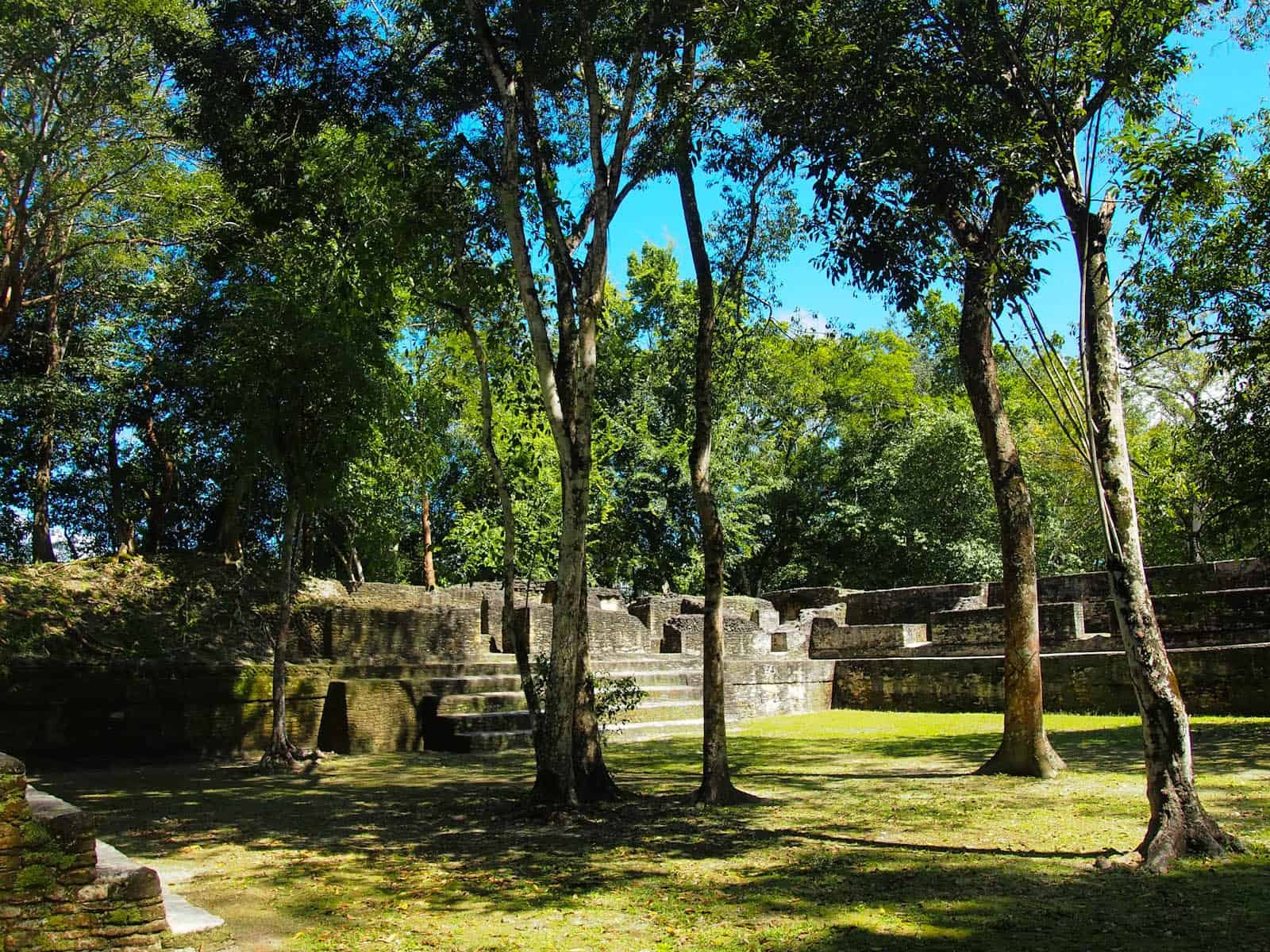After the bloody introduction we’d had to Belize, I figured our time in this small Central American country could only improve. We’d marked out a vague itinerary for our two weeks, allowing plenty of time to not do very much – to ward off exhaustion, we’d finally learned to reign in the ambition when it came to exploring somewhere new in a hurry.
Sticker shock had made itself known even before we arrived, however – a quick glance at accommodation prices told us that Belize wasn’t going to be cheap. A decent double room, often without air-conditioning, typically ran upwards of $40/night — without even the benefit of breakfast to take a little of the sting out of it.
Food, too, was expensive – maybe we’d just been spoiled by six months in Mexico, but cheap and delicious street eats seemed in short supply. Public transport, however? That, at least, was a bargain – the rickety old Bluebird buses bounced and rocked their way all over the country for a couple of bucks.
After half a day on one such bus from Belize City, we arrived in San Ignacio sleepy, grimy and with stomachs complaining loudly. A jerk chicken restaurant near the bus stop dealt with the intestinal cacophony, and when we finally tracked down our hotel, a shower removed most of the travel stink as well. Sleep, however, was going to have to wait. We had rocks to look at.
While it’s Mexico that gets much of the attention when it comes to ruins, the Mayan kingdom stretched over a wide area that includes modern-day Belize and parts of Honduras, El Salvador and Guatemala as well. We’d expected to quickly tire of pyramids and ball courts, but if six weeks in the Yucatan hadn’t managed it, an extra few days further south wasn’t likely to either.
Despite having a name that looks like a cat walked over the keyboard, it wasn’t hard to find our way to the starting point for the Xunantunich ruins. Buses dawdled west out of town towards Benque on a vaguely-regular basis, and after about 10km there was a nice big sign on the side of the road that even I couldn’t miss. A little wooden barge shuttled passengers and the occasional car or scooter across the river whenever the operator felt like it, before a final 15 minute walk through the forest had us dripping with sweat long before we saw the ticket office. I’d suggest arriving early, just like we didn’t.
Somewhat surprisingly, the site was almost devoid of other visitors. Well, devoid of human visitors, at least. Shortly after arrival, mayhem erupted in the nearby trees, with noises quite unlike anything I’d ever heard before.
Hello, howler monkeys.
After exploring the smaller ruins for a while and listening to the primates scream, we scaled El Castilo. This 40 metre pyramid dominates Xunantunich, and unlike its namesake at Chichen Itza, can be climbed by anyone fit enough to do so.
The views from the top were breathtaking – you can see well into Guatemala – and given that there was no hurry, we plonked ourselves down in a patch of shade and did pretty much nothing for half an hour. It would have been even longer, if it wasn’t for the noisy group of German backpackers that eventually joined us at the top.
Honestly, I’d have preferred the howler monkeys.
Even with the extended stay at the top of the pyramid, we were in and out of the park in little more than a couple of hours — it’s just not that big. Still, when it comes to attractions, I’ll take small and deserted over huge and overflowing with people any day of the week.
—
If walking round Xunantunich had been a sweaty affair, visiting Cahal Pech the following day was little more than a recipe for heatstroke. It was the walk there that did it – it may only have been a couple of kilometres, but they were two of the hottest, sweatiest, dustiest kilometres I’d walked in quite some time. Uphill, of course.
Leaving Lauren to sensibly pass out rest in the shade, I explored the tiny ruin site alone. Clambering up slippery stairs and through crumbling rocky archways was fun, as far as it went, but it was hard to spin things out for more than half an hour. There’s still plenty of excavation going on at Cahal Pech – a small team of archaeologists were doing exactly that – but for now, there’s not really all that much to see for your 10BZ ($5 USD) entry fee.
Although I did find a perfectly imperfect butterfly struggling to make its way across the mossy ground, its wing as broken as the buildings surrounding it.
And really, that was about it for San Ignacio. It’s more of a service town and jumping-off point for various tours than an attraction in its own right, and while it was nice enough in a dusty kind of way, two or three nights was all it needed.
From small ruins to huge ones, the next day was going to see us changing currencies, language and country once more. It was time for a side trip to Tikal.
Have you been to any of the Mayan ruins in Belize? What did you think of them?
[restabs alignment=”osc-tabs-left” responsive=”true” icon=”true” text=”More” seltabcolor=”#e5e5e5″]
[restab title=”Where I Stayed” active=”active”]We stayed at the River Park Inn, a guesthouse and campsite just outside the main town and about a five minute walk from the bus station. The rooms were clean, the a/c worked well and the owner was lovely — he runs a tailoring shop downstairs and even sewed up a hole in my shorts without asking as part of the laundry service!
[/restab][/restabs]
